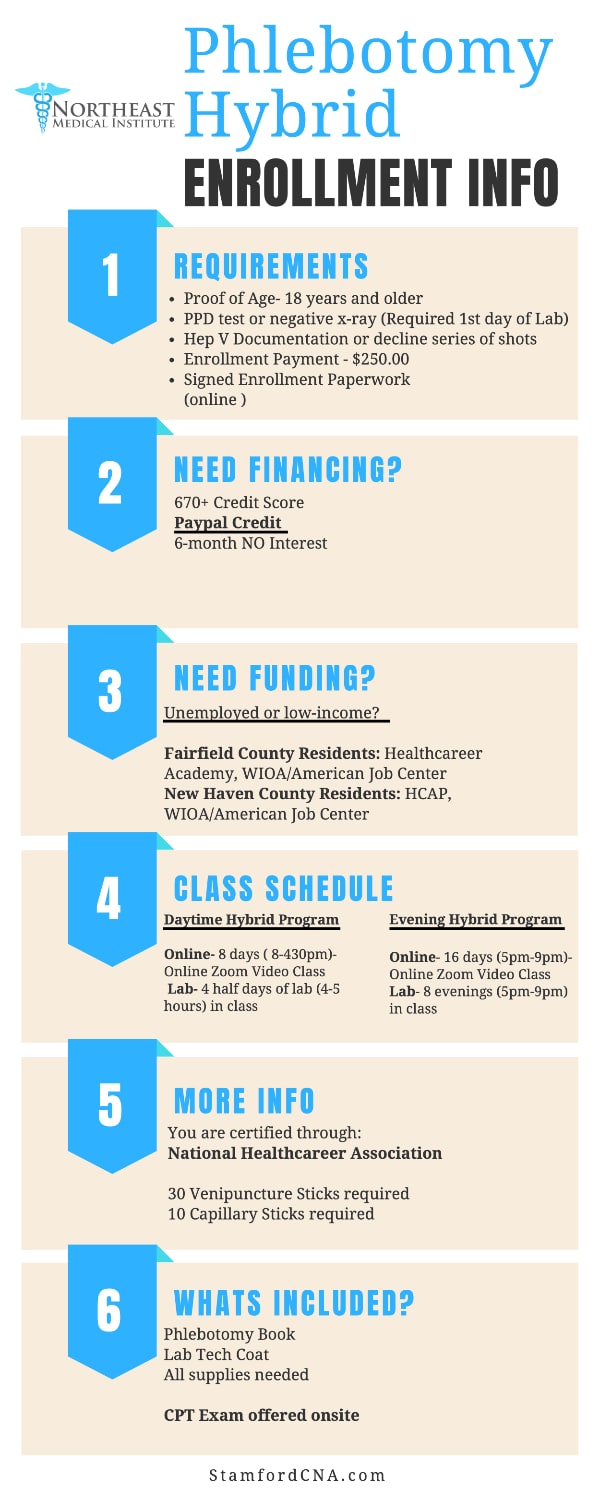4 Simple Techniques For Northeast Medical Institute - New Haven Campus Phlebotomy Course & Cna Class
4 Simple Techniques For Northeast Medical Institute - New Haven Campus Phlebotomy Course & Cna Class
Blog Article
Things about Northeast Medical Institute - New Haven Campus Phlebotomy Course & Cna Class
Table of ContentsThe Northeast Medical Institute - New Haven Campus Phlebotomy Course & Cna Class StatementsThe Best Strategy To Use For Northeast Medical Institute - New Haven Campus Phlebotomy Course & Cna ClassThe Greatest Guide To Northeast Medical Institute - New Haven Campus Phlebotomy Course & Cna ClassThings about Northeast Medical Institute - New Haven Campus Phlebotomy Course & Cna ClassThe Definitive Guide for Northeast Medical Institute - New Haven Campus Phlebotomy Course & Cna ClassAn Unbiased View of Northeast Medical Institute - New Haven Campus Phlebotomy Course & Cna Class
Nevertheless, using such devices should be accompanied by other infection avoidance and control methods, and training in their use. Not all safety and security devices apply to phlebotomy. Before selecting a safety-engineered tool, individuals must completely examine readily available tools to identify their appropriate use, compatibility with existing phlebotomy practices, and efficacy in shielding personnel and people (12, 33).For setups with low sources, cost is a motoring aspect in procurement of safety-engineered tools. Where safety-engineered devices are not readily available, knowledgeable use of a needle and syringe is appropriate.
labelling); transportation problems; analysis of outcomes for clinical monitoring. In an outpatient department or clinic, supply a committed phlebotomy cubicle containing: a clean surface with two chairs (one for the phlebotomist and the other for the client); a hand laundry container with soap, running water and paper towels; alcohol hand rub. In the blood-sampling space for an outpatient department or center, supply a comfy reclining sofa with an arm remainder.
Some Known Facts About Northeast Medical Institute - New Haven Campus Phlebotomy Course & Cna Class.
Make sure that the indicators for blood sampling are plainly specified, either in a created procedure or in documented instructions (e.g. in a lab type). At all times, adhere to the methods for infection prevention and control listed in Table 2.2. Infection prevention and control techniques. Collect all the devices needed for the procedure and area it within safe and simple reach on a tray or trolley, making certain that all the items are plainly visible.
Where the individual is adult and aware, adhere to the steps described listed below. Introduce yourself to the individual, and ask the individual to specify their complete name. Check that the laboratory type matches the individual's identification (i.e. match the person's details with the research laboratory type, to guarantee precise identification). Ask whether the license has allergic reactions, phobias or has actually ever passed out throughout previous injections or blood attracts.
Make the patient comfy in a supine placement (if possible). The person has a right to refuse an examination at any type of time before the blood tasting, so it is crucial to make sure that the client has recognized the treatment - CNA Courses.
The Basic Principles Of Northeast Medical Institute - New Haven Campus Phlebotomy Course & Cna Class
Prolong the person's arm and inspect the antecubital fossa or forearm. Locate a blood vessel of an excellent size that is visible, straight and clear.
DO NOT place the needle where capillaries are drawing away, due to the fact that this increases the chance of a haematoma. The vein ought to show up without using the tourniquet. Finding the blood vessel will certainly aid in determining the appropriate size of needle. Apply the tourniquet about 45 finger widths above the venepuncture website and re-examine the capillary.
Specimens from central lines carry a danger of contamination or erroneous research laboratory test outcomes. It is acceptable, however not perfect, to attract blood specimens when very first presenting an in-dwelling venous device, prior to attaching the cannula to the intravenous fluids.
Little Known Facts About Northeast Medical Institute - New Haven Campus Phlebotomy Course & Cna Class.
Allow the area to dry. Failing to permit sufficient call time increases the danger of contamination. DO NOT touch the cleaned up site; specifically, DO NOT position a finger over the vein to direct the shaft of the subjected needle. It the website is touched, more repeat the sanitation. Execute venepuncture as adheres to.
Ask the client to develop a clenched fist so the capillaries are much more famous. Go into the capillary promptly at a 30 level angle or less, and remain to present the needle along the capillary at the simplest angle of entry - Phlebotomy Courses. Once adequate blood has actually been gathered, release the tourniquet BEFORE withdrawing the needle
Getting The Northeast Medical Institute - New Haven Campus Phlebotomy Course & Cna Class To Work
Take out the needle gently and use gentle pressure to the site with a tidy gauze or completely dry cotton-wool sphere. Ask the client to hold the gauze or cotton woollen in position, with the arm expanded and increased. Ask the person NOT to bend the arm, because doing so causes a haematoma.

The 15-Second Trick For Northeast Medical Institute - New Haven Campus Phlebotomy Course & Cna Class
Where possible, keep the tubes in a shelf and move the rack towards you - https://www.twitch.tv/northeastmed/about. If the example tube does not have a rubber stopper, inject extremely gradually right into the tube as lessening the pressure and rate utilized to transfer the sampling decreases the risk of haemolysis.

Report this page